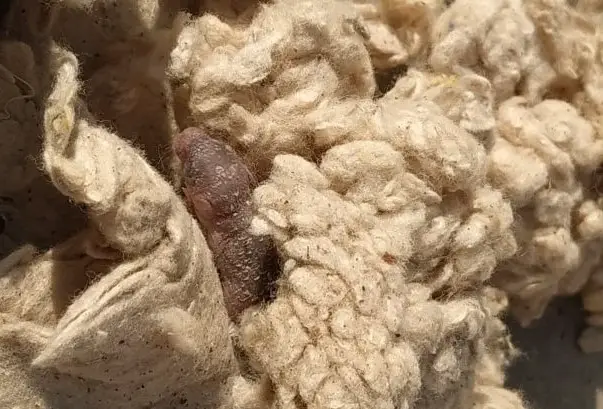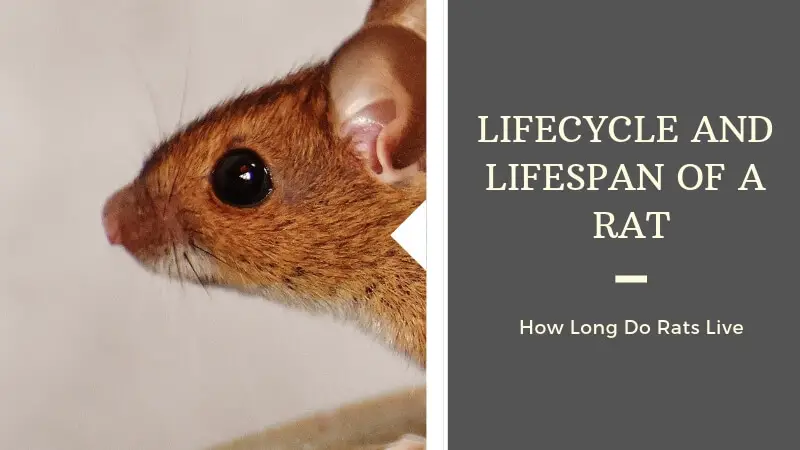That rats breed phenomenally is an understatement. And that’s also where half the problem lies in dealing with them. They not only produce way too many puppies per litter, but they are also capable of undergoing numerous birthing cycles per year. Because nature has a natural way of balancing things, however, a lot of young rats die out before reaching the age of one.
So what is the lifespan of a rat?
Depends on where the rat lives, really, and after that, how it lives. Proper attention by human beings can bring about significant change in the quality of a rat’s lifestyle.
While rats are tough, having to fight through all the challenges that they face, they barely manage to survive over a year in the wild. A 2004 study conducted in the UK showed that rats on an average live inside comfortable homes for 1.8 years, or when their age is 21.6 months. A 1.5 month old rat is the same as a 12.5 year old prepubescent human adolescent. 95% of rats kept in homes die by 3 years. And if they live beyond that, it is only because amazing care has been taken since the beginning, including giving them vaccines and good food and checking them regularly for cancers and other issues. Genes too contribute majorly to a rat’s lifespan. A rat living for 4 years would be equal to a human surviving for 120 years!
Reproduction in Rats
It is a bit tricky to distinguish between male and female rats by sight because of their size. A close observation reveals that they have the standard mammalian differences, starting with greater anogenital distance in the males.
Female rats, like other mammals, have the estrous cycle which lasts for 5 days and is divided into 4 stages. Ovulation occurs at the end of the third stage. The females ready to mate display a behavior called lordosis in which they apply downward pressure to their pelvis and raise up their hindquarters. Once they have mated, a vaginal plug is formed which lasts for any time between 16 to 48 hours.
Where do they nest?
Because rats are found all over the world, their nesting habits depend on what is around them. Rice fields, swamps, buildings, trees, climate cold and hot, they are everywhere.
The burrows always have other holes in addition to the main entrance, which are known as the bolt holes, usually found in the back areas. Yes, they are pretty clever engineers.
Rats usually live in packs. During the mating season, the males and the females go off to form packs of their own. After the birthing of the babies, the males may or may not go away.

How do rats breed?
During the breeding season, the female rats give off a hormone named pheromone, the same given off by other animals and insects living in packs. This is given off to attract males to them, which are detected by the male’s vomeronasal glands. The males, in their turn, emit a high-pitched singing sound which is beyond the detection capabilities of the human ear. In order to ensure that she is pregnant, she will mate with multiple partners.
A female rat on an average can mate around 500 times within a period of 6 hours. They are literally such baby making machines that they are ready to go back to getting pregnant again within hours of giving birth.
The gestation period on average of rats is 21 to 26 days. The babies born are extremely fragile and weigh around 6 to 8 grams or around .21 to .28 ounces at the time of their birth.
According to Discover Magazine, brown rats can produce on an average 2,000 offspring a year. A single female rat can produce up to 80 babies every year. The most common type of rat, the brown rat or the common rat, can produce up to 22 in a litter, but on an average eight or nine. Tropical rats can have on an average one to six babies per litter.
What are young rats like?
They are very fragile, hairless or altricial like most other rodents, and like other mammals, remain blind for around 15 days. The mother rat is very efficient and will single-handedly raise her litter. And, in case there are communities of females around her at the time of the birth, the unoccupied ones may take care of the babies while she is out hunting for herself. That depends on the breed though- some breeds like the Norwegian rats have independent nests. Food is the only reason she leaves her litter, and she is extremely protective of her litter, considering the fact that baby rats are prey material for even older rats during hard times.
Most house rats, which are mostly brown rats, are able to reproduce once they reach 3 months of age, which is natural, considering the enormously difficult lives they lead and the low life expectancy that they have in the wild.
The pups start growing fur seriously at around 8 days. They are weaned from their mother when they are around 3 weeks old. That is when they start moving out and trying to get their own food. However, quite a few prefer staying close to their mother, as they face considerable danger from all corners.
The young rats tend to mimic older rats a lot. Which is why they play-fight amongst themselves, like most other mammals. The males are more energetic than the female ones in this. They chase each other, box and wrestle. They tend to stay away even from older rats in their packs.
What happens next?
Once they are capable of independent existence, they move out of their burrows. The female young rats may prefer to stay back once they become sexually mature, preferring to give birth in the old burrows. Or they may actually make independent nests, depending on the breed and the circumstances.
Most rats do not live up to be a year old. Like around 95 to 97% of the rats. It is an extreme case of survival of the fittest for rats, their condition aggravated by their proximity to human existence.
While rats are considerably civil and social, sometimes the older male rats will fight for dominance. Nevertheless, they are pack animals, so they have their dominant members sorted out and then become quite stable until the new batches grow up.
Sometimes, rats from other communes are introduced into pre-existing ones, especially when they are young. These are human interventions for specific reasons like breeding or experimentation. And even they are generally well integrated.
They are efficient communicators. Their sounds are not always heard by humans, but they have a set system which is used to warn each other about danger and food and can be heard by other members from up to 50 feet away.
To sum it up, rats are pretty admirable creatures really. No matter what they face, they have an incredible will to see it through, and often to do so together. They have been here for millions of years, and are going to continue to do so for quite some time.

